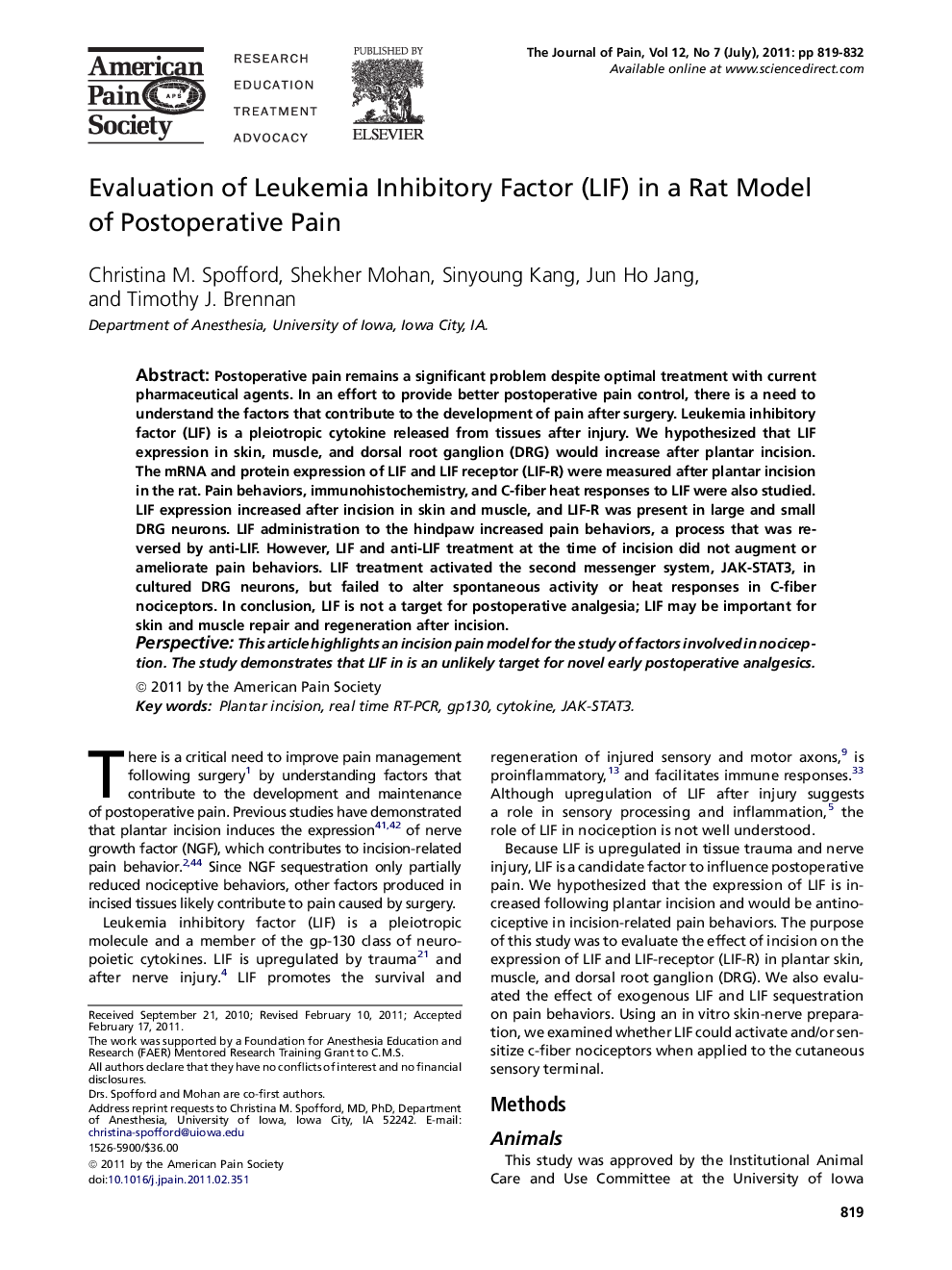| Article ID | Journal | Published Year | Pages | File Type |
|---|---|---|---|---|
| 2734314 | The Journal of Pain | 2011 | 14 Pages |
Postoperative pain remains a significant problem despite optimal treatment with current pharmaceutical agents. In an effort to provide better postoperative pain control, there is a need to understand the factors that contribute to the development of pain after surgery. Leukemia inhibitory factor (LIF) is a pleiotropic cytokine released from tissues after injury. We hypothesized that LIF expression in skin, muscle, and dorsal root ganglion (DRG) would increase after plantar incision. The mRNA and protein expression of LIF and LIF receptor (LIF-R) were measured after plantar incision in the rat. Pain behaviors, immunohistochemistry, and C-fiber heat responses to LIF were also studied. LIF expression increased after incision in skin and muscle, and LIF-R was present in large and small DRG neurons. LIF administration to the hindpaw increased pain behaviors, a process that was reversed by anti-LIF. However, LIF and anti-LIF treatment at the time of incision did not augment or ameliorate pain behaviors. LIF treatment activated the second messenger system, JAK-STAT3, in cultured DRG neurons, but failed to alter spontaneous activity or heat responses in C-fiber nociceptors. In conclusion, LIF is not a target for postoperative analgesia; LIF may be important for skin and muscle repair and regeneration after incision.PerspectiveThis article highlights an incision pain model for the study of factors involved in nociception. The study demonstrates that LIF in is an unlikely target for novel early postoperative analgesics.
